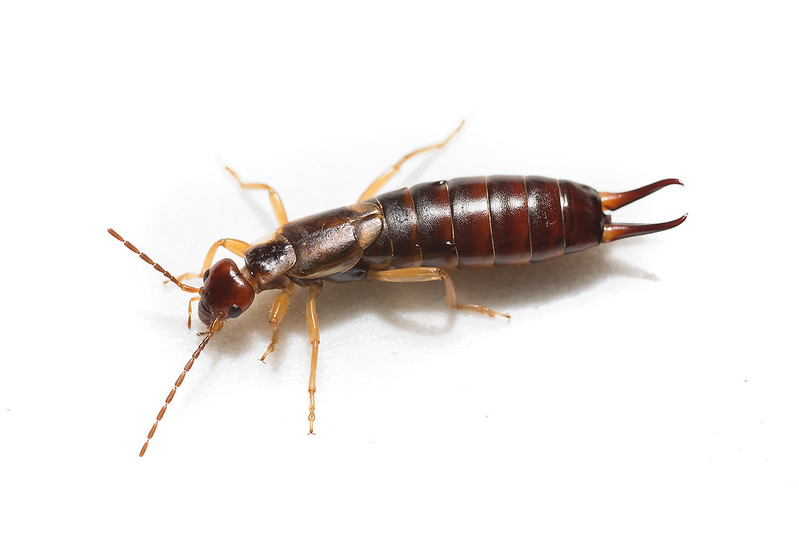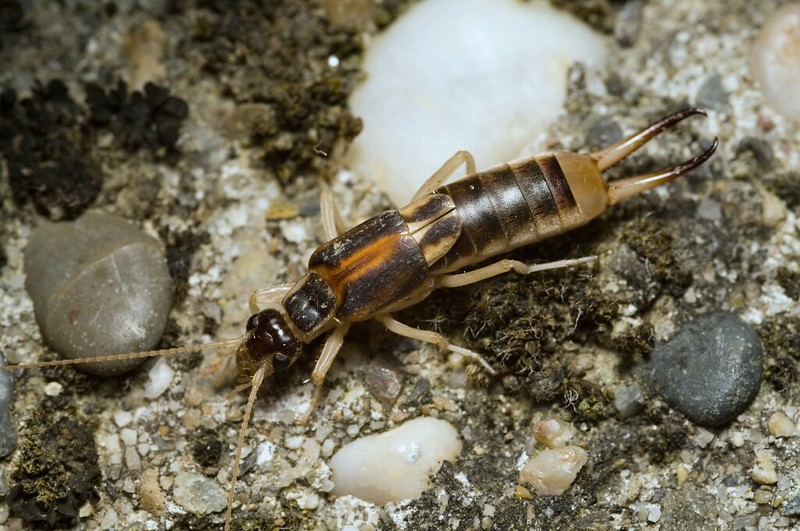The feature most people are going to be most taken back by are, however, their characteristic strong pincers, found protruding from the back of earwigs’ abdomens. Combined with their terrifying name, these pincers are quite enough to beg the question — are earwigs dangerous? Let’s examine that further.
Do Earwigs Bite or Sting?
Earwigs are omnivorous scavengers who tend to go for decaying (dead) plant matter as well as smaller pest insects. They do not bite or sting humans, but that is not all that needs to be said on the matter. Like many other otherwise harmless insects, earwigs, too, will attempt to attack people if they feel threatened — generally in situations where you corner an earwig, catch one to release it outdoors, or try to squash one.
In such cases, earwigs will make use of their impressive pincers to defend themselves. These pincers aren’t designed to break human skin, and generally won’t succeed in doing so — but they can still cause mild pain. If you do get pinched by an earwig to the point where they draw blood, also keep in mind that this can introduce germs. Washing the site thoroughly with soap and water is recommended. Simultaneously, while earwigs are not poisonous or venomous, they do have the ability to release a nasty-smelling substance when they are under attack.
Thankfully, there is a relatively easy way to avoid being pinched by an earwig; do not handle these insects with your bare hands. They’re also not terribly hard to get rid of in the house (and the good news is that home infestations in large numbers are rare).
Do Earwigs Actually Crawl into Your Ear?
Earwigs thrive in damp and dark environments, preferring the wet soil in your garden or the refuge of your compost bin to your carefully-maintained bedroom. The old legend that earwigs crawl into your ears while you are sleeping, and perhaps even make it all the way to your brain, therefore makes less sense today than they did in the middle ages. When these tales emerged, people’s bedrooms were far more likely to be damp, cool, dark, and dirty than they are today. Earwigs would avoid a typical modern bedroom like the plague.
There is no evidence that earwigs ever did like to crawl into people’s ears, though. This myth probably emerged because earwigs’ scary appearance triggered our forebears’ wild imagination. If this scary story helps you remember to wash your ears thoroughly, however, that can only be a good thing.
Are Earwigs Dangerous to Pets?
Earwigs will not seek out cats or dogs — but your pet won’t return the favor. As curious hunters, cats and dogs are likely to become excited whenever they see a bug, and chase after it. Just like an earwig would try to defend itself from humans who threaten them, they’ll use their pincers on cats and dogs as well. While people are most likely to have their hands pinched, cat and dog noses are a target, given the fact that these pets will try to devour earwigs.
Earwig pinches do not pose a serious health risk to cats and dogs, but they can inflict serious pain. No veterinary assistance will be needed, however.
Are Earwigs Bad for Your Garden?
Yes, earwigs can pose a threat in the garden. As scavengers that can eat almost anything, they will take what’s on offer — including the roots of many of the plants you may be nurturing. Earwigs particularly enjoy strawberry, clover, celery, and dahlia roots. They can also eat the leaves of some young plants, in which case the visible damage they leave behind looks a lot like that inflicted by slugs.
One easy way to defend your plants from earwigs would be to fill small containers with water and vegetable oil. As pest insects fall in, they will not be able to escape. Regularly weeding your garden and clearing decaying organic debris like fallen leaves will also help keep earwig populations in check naturally.
Citations and Credits

